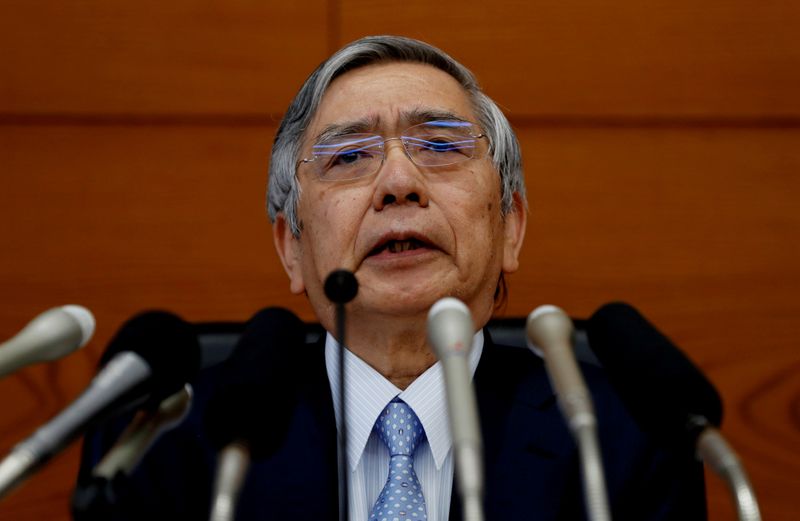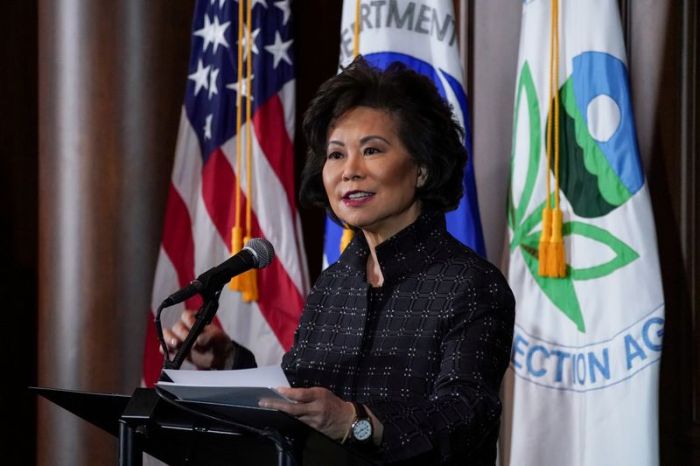TOKYO (Reuters) – Bank of Japan Governor Haruhiko Kuroda said he saw no need to widen an implicit band set for its long-term interest rate target at a policy review in March, stressing the need to keep borrowing costs low to support a pandemic-ravaged economy.
The BOJ caps the 10-year bond yield around zero under a policy dubbed yield curve control (YCC), and currently allows the benchmark yield to move 40 basis points around the target.
Markets have been rife with speculation the BOJ would widen that band and allow yields to move higher, but Kuroda played down that possibility on Friday.
“It’s something we will discuss at the (March) review. But I don’t think it’s necessary or appropriate to sharply widen the band,” Kuroda told parliament.
“We need to keep the yield curve stably low” as the economy still suffers the blow from the COVID-19 pandemic, he said. “I don’t think we need to widen the band.”
Kuroda’s remarks briefly sent yields on 10-year Japanese government bonds to a nearly three-week low of 0.07%, before recovering to 0.09%.
“The BOJ probably wanted to keep in check what it saw as a misconception in markets the March review would focus on steps to steepen the yield curve,” said Mari Iwashita, chief market economist at Daiwa Securities.
MISSION ALREADY ACCOMPLISHED?
Expectations of a strong post-pandemic recovery have pushed up global yields including those for Japan, where the 10-year yield has briefly crept near the BOJ’s implicit 0.2% ceiling.
Allowing yields to move more flexibly around the BOJ’s target would make YCC more flexible, one of the key goals of a review of its policy framework scheduled on March 18-19.
But it could also lead to higher borrowing costs for companies already struggling with the hit from the pandemic.
“The roll-out of vaccines is encouraging but there’s still very high uncertainty over the pandemic and its impact on the economy,” Kuroda said, stressing that risks to the outlook were skewed to the downside.
Some analysts say the BOJ has already succeeded in breathing life back into a dormant market, thanks in part to a global bond rout that pushed the 10-year JGB yield to 0.175% last month.
Allowing yields to rise even further could have been too risky for the BOJ at a time many Japanese firms close their books at the March end of the fiscal year, said Ryutaro Kono, chief Japan economist at BNP Paribas.
“The review was likely to be a minor change (of YCC) in the first place. With an expansion of the band ruled out, any tweak will be so small you’ll need a magnifying glass to find it.”
Kuroda said the BOJ’s March review will also look at ways to make its purchases of exchange-traded funds (ETF) more flexible.
“We have been and must continue to buy ETFs flexibly. We’ll discuss at the March review how specifically we could make our purchases more nimble,” Kuroda said.
The key would be to make the BOJ’s ETF-buying programme nimble so that the central bank would step in only when markets become volatile and lead to a sharp rise in risk premia, he added.
(Reporting by Leika Kihara; Editing by Chris Gallagher, Sam Holmes, Ana Nicolaci da Costa and Lincoln Feast.)

























